In this article we will try to consider in detail the most popular questions related to apartment meters heat:
So, the list of questions is indicated, we will begin their consideration in order.
1. What is an apartment heat meter, how does it work and what is it for?
This is a device for apartment heat energy metering, designed for individual payment for heating and saving energy by reducing heat consumption in apartments and any other premises (offices, shops, etc.). Any apartment heat meter can be divided into 3 components:
- electronic heat calculator;
- flow meter;
- a set of thermal converters.
Calculator- this is an electronic unit that collects readings from the flow meter and thermal converters and converts them into thermal energy consumption. The calculator usually runs on a battery that lasts for 4 years. Power supply from the 220V network has not found mass application in apartment appliances.
flow meter- this is in most cases a mechanical hot water meter with pulse output for transferring data on the flow rate of the coolant to the calculator. Recently, ultrasonic and electromagnetic flow meters have begun to become widespread - but they have a significant drawback - the high price of the device, which makes its installation ineffective in terms of reducing utility bills.
Set of thermal converters- this is usually a pair of selected platinum thermal resistances with Pt100 or Pt500 graduations, one of which is installed in the flowmeter housing, and the second is installed on the pipe using a special tap or boss.
The principle of operation of an apartment heat meter is quite simple - hot water passes through the pipe on which the flow meter is installed and data on the flow rate of the coolant and its temperature are transmitted to the calculator, which calculates the amount of heat that the apartment consumes in Gcal.
2. How to choose an apartment heat meter?
If you decide to install an apartment heat meter or you are forced to do this, then the most important thing is to AGREE ON THE SPECIFIC MODEL OF THE DEVICE with the owner of the heat - a heating network, HOA, housing cooperative or any other organization to which you will pay receipts for heating. To coordinate the installation of the device, it is necessary to take the documents for the apartment and go with them to the heat supply organization to obtain permission and technical conditions.
Two simple options are possible here: you are denied the opportunity to install a heat meter or they are given technical specifications with parameters for accounting for the coolant and recommendations for installation and types of devices.
In deep installation theory measuring instrument You should be approved without any problems or, in case of refusal, you should be given a paper on which it will be motivated to write why the heat meter cannot be installed. Litigation with a heat supply organization or not is the choice of each owner, but the process is complicated, although there are cases of victories - the question is how many nerves and funds will be spent on litigation?
If you were given technical specifications for installation, then there are also two common options.
1 option. You are strongly advised to buy only a certain model of the device - this is quite a common practice and it is quite difficult to "win" this, because interested parties will find 100 reasons why certain devices are very good, and the rest are just "trash". The owner of heat is essentially a monopolist, because his heat comes to your apartment through a pipe and there is usually no alternative, so fighting with him or buying a recommended model is everyone's choice, but the experience of a large number of our customers shows that without a serious administrative resource, you can win very difficult - such realities.
Option 2. The heat supply organization with great pleasure gives you technical specifications for the installation of a heat meter (or reports that it does not care about the model of the device, then just in case take documentary evidence of this) and you just have to choose the model of the device in accordance with the requirements. In this case, the most important thing is that the device is new, with a passport and a certificate, with a guarantee.
ATTENTION!!! When agreeing on the heat meter model, it is necessary to deal with the installation site (direct or return pipeline) and the coolant flow rate (for DN 15 it is 0.6 m3 / h, 1 m3 / h or 1.5 m3 / h, for DN 20 it is 1.5 m3 / h or 2.5 m3 / h ).
3. Do I need a project for an apartment heat meter?
If the heat meter has already been installed in the apartment and you want to replace it with a new one, then you need to coordinate the change of the device with the heat supply organization and usually there are no problems in this case.
If the heat meter in the apartment was not previously installed, then the need for a project to install a heat meter falls entirely at the discretion of the heat supply organization. A project for an apartment can be quite expensive (from 5,000 to 50,000 rubles, depending on the region and the complexity of the wiring) and this is the factor that can “kill” the dream of serious savings in payment for heat.
4. Where to buy an apartment heat meter?
Experience shows that this is the simplest issue faced by a heat owner who has decided to install an apartment heat meter.The answer to it is more than simple - in any organization that sells heat meters. You need to pay attention to several factors: for the device to be new, the presence of a passport with a personal number and a certificate for measuring instruments, the presence of an initial verification for the device and do not forget about the factory warranty. You can also look for reviews of apartment heat meters on the Internet, but given the customized nature of most of them, you shouldn’t take them seriously, it’s easier to talk to people who have real operating experience in your city - they will be able to tell you the whole truth, because. each city has different water quality and different requirements heat supply organizations is an invaluable experience that will allow you to avoid many pitfalls and save a lot of nerves and money.
To sum up the answer, you can simply - the choice is yours.


Apartment heat meter STK MARS Heat meter apartment Elf
5. How to install an apartment heat meter?
The installation of an apartment heat meter is carried out according to the recommendations of the heat supply organization, which are usually prescribed in specifications for installation. If the owner of the heat does not give installation recommendations, then in this case it is necessary to carry out the installation in accordance with the recommendations written in the heat meter operating manual.
An example of installing an apartment heat meter on a supply pipeline.
On the return pipeline, the installation is similar, only the device is on the return pipeline, the valve with a temperature sensor is on the direct one.
There are a few more important nuances that many people forget, and then you have to spend a lot of nerves, money and time. In our experience this is very important, don't forget to consider:
- installation of a filter (preferably magnetic, if there is none, a regular mesh one will do) - without it, you run the risk of clogging the meter with scale, and in this case, the warranty on the device will not apply. After the failure of the heat meter, in addition to buying a new one, you still have to buy a filter, only reworking the finished system will cost much more than the initial installation of the filter.
- installation of ball valves before and after the heat meter, as well as a bypass - this is very important because in the event of repair or verification, you will be able to fully use the heating system, and in winter this is not unimportant, especially in the northern regions of Russia.
- provide free access to the heat meter - this is also important, because often the device is closed in a decorative cabinet - this is beautiful and aesthetically pleasing, but in the case of repair work, this beauty often has to be destroyed, and this is expensive and insulting.
- protect the heat meter from flooding or direct water ingress on the calculator - this is very important, because the calculator is an electronic device, and if you are suddenly flooded by neighbors from above, then water ingress into the electronic part of the device threatens its failure - this is not a warranty case . If the device is installed in a closed box, it is necessary to provide a hole for draining water so that the box is not completely filled with water.
6. How to operate an apartment heat meter?
The operation of an apartment heat meter is fundamentally no different from a conventional hot water meter. All specific requirements for taking and transmitting instrument readings can be obtained from the “owner” of the heat, but usually if you have gone through all the ordeals to coordinate the instrument and its installation, there are no problems.7. How is the apartment heat meter calibrated?
The apartment heat meter is a measuring instrument and must be verified. When buying a device, you need to pay attention to the presence of primary verification, although today 99% of devices are already sold by attorneys and verification marks are in the product passport. The standard verification period is 4 years.Usually, there are no problems with verification for the first 4 years, and then small difficulties begin. The biggest disputes arise over the question of how long the heat meter is rechecked. Some heat supply organizations recognize a period of 4 years, while the other part forces the device to be rechecked every year. In the first case, you are lucky - you need to find a licensed organization in your city and they will double-check (some people work without even removing the devices from the pipe) and then use the heat meter for another 4 years.
But if you are forced to check the device every year, then you need to look at how much the recheck costs, because it is probably cheaper to buy a new device than to check it 4 times. It is quite difficult to argue and sue on this issue, because different heat supply organizations have a lot of their own internal documents and it is very difficult to prove something to them.
8. Is it profitable to install an apartment heat meter?
This is usually the most important and interesting question - here you and I will have to arm ourselves with a calculator - only it will help answer this rhetorical question.First case- you have apartment heat distribution, the installation of a heat meter in the house is provided - this is the simplest case, find out how much neighbors with appliances pay for heat, find out how much heat meters and installation cost, and by simple mathematical calculations, consider whether it is profitable to install appliances or it is cheaper to pay through a pipe .
Second case- you have apartment heating distribution, the installation of a heat meter in the house is not provided - here the cost of purchase and installation may be added design work and non-standard installation work, and the logic of the calculation is similar to the first case.
Third case- You have a multi-storey building with a vertical through wiring. This is the most common and severe case at the same time. Installing fixtures on each battery with an installation agreement is usually so expensive that it will most likely never pay off, except in cases with fantastic prices for public utilities in individual regions. In this case, the most profitable thing is to contact your HOA and insist on installing a common house heat meter - in 90%, heating payments are significantly reduced for all residents of the house and this is the most cost-effective option.
Summing up, we can only say one thing - whether it is profitable for you to install a heat meter or not, only you yourself can decide, because in different regions there is absolutely different conditions and utility bills and there is no definite answer.
9. Is it profitable to put the heat meter on hot water?
On this issue, the answer is simple - no, it is not profitable. It is advantageous to pay for hot water using a conventional hot water meter. If there is no hot water, then there is only one way out - close the tap in front of the meter and do not pay at all for legal grounds for hot water. If the water is warm and its temperature does not suit you (according to the normative documentation +65С with a deviation of 5С), then you need to send a letter to the heat supply organization with the requirement to provide services of proper quality. If they ignore your appeal, you can contact the consumer protection union or the court. Our experience shows that appealing to a consumer protection union is enough to get low temperature hot water hobbyists to start solving your problem.10. How to reduce the payment for the apartment heat meter?
The apartment heat meter is installed, everything is behind - how to pay less for heat? There are several simple and legal ways to reduce the fee:- pay attention to the windows - window insulation usually leads to a 10% drop in the payment on the receipt.
- pay attention to the front door - the insulation of the front door usually leads to a 5% drop in the payment on the receipt.
- pay attention to radiators, because high-quality aluminum and bimetallic radiators compared to cast iron radiators can reduce coolant consumption by more than 30%.
- if possible, install temperature regulators on the radiators, after that you set a comfortable temperature on the radiators, and stop heating the street.
Well, and finally...
On the Internet, you will often come across instructions on the topic "how to cheat the counter", beautiful videos with various modifications - that's all deception.
And most importantly - do not put magnets on heat meters as various "wise men" advise. Firstly, you risk taking an expensive device out of service and this will not be a warranty case, secondly, this is not legal and you may be held liable, and thirdly, this is not decent - you will steal money from your neighbors, with whom everyone is so nice hello day.
In this article, we tried to consider the most popular questions about apartment heat meters. If you want other questions to be considered or you do not agree with some answers - write to us and we will try to expand the article based on your experience. In the letter, do not forget to indicate your data, place, conditions and region of installation.
Dear readers!
It's done. You have finally installed a heat meter. But your questions did not decrease, but rather increased. The most frequently asked questions that arise after the installation of heat meters, I will try to answer in this article.
1. Can I be present when taking readings of heat meters?
It is possible and even necessary. It is necessary to be present when taking readings from heat meters, first of all, for the peace of mind of the residents of the house, for the correct reading of readings, this is not necessary.
Why just for the peace of mind of the residents?
Unfortunately, the times of Leonid Ilyich Brezhnev taught many to steal. I remember when the Argumenty i Fakty newspaper first appeared, it was something like Leninskaya Iskra, a sheet folded in half from the cheapest gray paper with yellowness, it was 1980. We read the newspaper to the holes, passing it from hand to hand. I read there a conversation between Leonid Ilyich and someone from his entourage. Unfortunately, I don’t remember with whom, but it doesn’t matter.
Leonid Ilyich was informed that the people live in poverty, the salary is beggarly - although of course now one could argue with this.
Leonid Ilyich replied - "so they can steal, no matter how lazy they are, I myself worked part-time as a student unloading wagons - I know."
These were the words of our leader, and it was a bitter truth, unfortunately, it cannot get rid of the very notion that it is possible to live without stealing our older generation. In addition, the years of perestroika convinced us even more of this. Therefore, the presence of representatives of the house at the first stages is simply necessary for the peace of mind of the residents.
 What necessary to take readings from the heat meter. Get a notepad or a small notebook, put it in a shield or box with a heat meter installed, and record the heat meter readings at the same time as the readings are taken by the service organization.
What necessary to take readings from the heat meter. Get a notepad or a small notebook, put it in a shield or box with a heat meter installed, and record the heat meter readings at the same time as the readings are taken by the service organization.
2. Installation of heat meters. Control of heat meter readings.
What readings need to be rewritten to control the operation of the heat meter?
After installing the heat meter and at each subsequent reading The following heat meter readings are recorded:
- date and time of taking the readings
- the accumulated mass of the heat carrier, in the heat meter it is in tons, in the heating supply pipeline, it is indicated in the heat meter - M 1
- the accumulated mass of the heat carrier, in the heat meter it is in tons, in the return of the heating pipeline, is indicated in the heat meter - M 2
- temperature in the heating flow pipe, indicated in the heat meter t1
- return temperature of the heating pipeline, indicated in the heat meter t2
The temperature must be checked against the indicating thermometers - the service organization will explain to the representative of the house where to look at the readings on the pipes and in the heat meter.
 Heat meter readings
and showing thermometers installed on the pipes of the heating network may differ by several degrees, but the temperature difference between the supply and return pipelines should always be the same.
Heat meter readings
and showing thermometers installed on the pipes of the heating network may differ by several degrees, but the temperature difference between the supply and return pipelines should always be the same.
The readings differ, because the thermometers that transmit readings to the heat meter installed directly in the medium - the coolant, and showing in a pocket with oil. And the thermometers of the heat meter, of course, are much more accurate, besides, they are paired for the supply and cold pipelines, it is written on them (G and X).
The next reading that you must read from the heat meter is consumed thermal energy, is indicated in the heat meter Q from (heating), Gcal.
In what other values \u200b\u200bthe readings can be and how to convert them into each other
The operating time is also a mandatory parameter for removal, heating networks are checked against it, how long did the heat meter work from the moment of start-up, and whether it was deliberately turned off by someone. If the heat meter did not work for some time due to a failure or was turned off, the heat meter readings will most likely be accepted from you, but heat will be added according to your average readings, for the period when the heat meter worked properly.
The same readings are recorded if you have hot water and it is supplied through separate pipes, that is, not two but three or four pipes come to the house, only the prefix (OT) will be replaced with input 1 and input 2. By the way, in the future, in further, you will no longer need to rewrite the testimony, since they can be viewed on-line (via the Internet) at any time.
3. Installation of heat meters. Is it possible to cheat the heat meter?
Theoretically, the heat meter can be deceived - but why?

It implies that you will pay for the heat actually received, and it is the installation of heat meters that will teach residents how to heat. A heat meter deception will be revealed during the first comprehensive verification, which thermal workers are required to carry out at least once every three months. If they notice that the house consumes heat much less than expected, they will come with verification immediately.
The result is a fivefold penalty for latent thermal energy. Is it worth the risk. A modern heat meter is arranged so that even if you reset it, the archived readings are saved and can be downloaded and analyzed on a computer.
Therefore, it is better not to take risks, but to save in other ways, which
4. Installation of heat meters. Fraud according to the indications of the heat meter.
Can heating networks deceive according to the indications of the installed heat meter?
The answer is also unequivocal - no. They are also checked, and much more often than they check you. And they pay more fines than you. In addition, people who live in the same apartments as you also work there. If they take extra money from you in their pocket, they still won't put it in.
There is, of course, a small chance that heat suppliers can cover their negligence at your expense, for example, uninsulated pipes, but in practice it is easier for them Write off excess heat as a loss. For that, management companies and homeowners associations often sin here. Here they often deceive us with you, it is difficult to fight with management companies, but still it is possible ....
How to deceive a heat meter and is it possible to do it?
A lot of unscrupulous users of energy resources come up with various ways how you can deceive the meter and pay less than what is due. Heat meters are no exception and many subscribers use various tricks to deceive them. In order to understand how to deceive a heat meter, first you need to understand the principle of operation of the device, since it can be different, and the method of stopping it depends on this, respectively. There are three types of heat meters:
- electromagnetic action;
- Vortex action;
- Tachometric;
Also, in order to understand how to deceive a heat meter, one should take into account the main components of it:
- Water flow lock;
- Thermal converter;
- heat calculator;
The data of the flow meter and temperature sensor are transmitted to the heat calculator, which provides data on the consumption of heat energy. It is possible to replace data on any of the elements of the counter.
Options for correcting the readings of electromagnetic metering devices
The principle of operation of this device is that between the two magnetic coils, which are located above and below the part of the movement of water in the device, an electromagnetic field is created due to the supply AC voltage certain frequency. When moving, water creates an EMF, which is transmitted by means of electrodes to the heat meter.
To change the magnetic field, coils are installed outside the device, the voltage of which is antiphase to the meter coils. Force magnetic field the counter is underestimated and, accordingly, the generation of EMF decreases.
Options for cheating vortex-type counters
The principle of operation of such a device is to install a bluff body in the flow part of the counter, which can have various geometric shapes. Vortices are formed behind the body, they directly depend on the power of the fluid movement. The electrodes read information about the number of vortices and transmit it to the computer. To deceive such a counter, permanent magnets are mounted outside that knock down the electromagnetic field of the device.
To understand how to stop the heat meter, you can also use the method of disrupting the movement of the fluid flow, which will change the normal formation of vortices. To do this, simply shift the gaskets in the flow path of the device when installing it.
These are the main ways of distorting the readings of heat meters, which are very popular with unscrupulous subscribers. It should be remembered that payment by metering devices is already profitable and economical, so you should not break the law and get into a situation that may entail a fine.
Advantages of heat meters from the Teplovodomer company
For more than 20 years, the company has been producing various modifications of meters for accounting for heat energy, both for autonomous installation in apartments and for general house needs, we offer the following modifications of devices:
- ELF heat meters that can work together with water meters and gas meters;
- MULTICAL UF heat meters are designed for installation both in residential and non-residential industrial facilities.
The advantage of our devices is that they are equipped with powerful anti-magnetic protection and external stimuli will not affect them, which will contribute to the distortion of readings, which will protect the device itself from damage, and its owner from trouble.
Today, more and more apartment owners prefer to install heat meters for heating. The benefits of using these devices are obvious. After all, payment is made only for the actually received heat. This means you can save a lot of money. Manufacturers offer different models and types of battery meters. This article will consider such aspects: the principle of operation of the device, existing varieties, the cost of purchase and installation, as well as the question of concern to many users whether it is possible to deceive heating meters.
 The cost of heating increases every year. Some people are trying to solve this problem through a more economical attitude to heat: they put up new windows, insulate their home. Modern double-glazed windows are energy efficient and allow you to save about 30% of heat.
The cost of heating increases every year. Some people are trying to solve this problem through a more economical attitude to heat: they put up new windows, insulate their home. Modern double-glazed windows are energy efficient and allow you to save about 30% of heat.
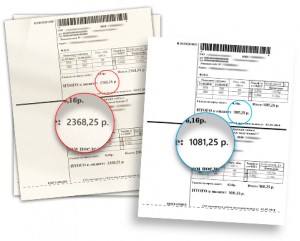 Very often, the owner of the house has to pay a lot of money during the heating season. At the same time, batteries do not always heat the room at the proper level. As a result, a person pays for what he does not receive. In this case, heating meters are an excellent option for saving Money. By installing a meter in an apartment, you can save about 40% of the total payment for heating services. The installation of a measuring device pays off within 3 to 6 months of the heating season.
Very often, the owner of the house has to pay a lot of money during the heating season. At the same time, batteries do not always heat the room at the proper level. As a result, a person pays for what he does not receive. In this case, heating meters are an excellent option for saving Money. By installing a meter in an apartment, you can save about 40% of the total payment for heating services. The installation of a measuring device pays off within 3 to 6 months of the heating season.
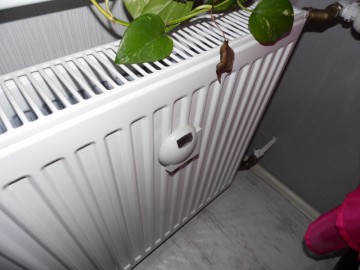 Sometimes poor heating is associated with the negligence of service workers, with the operator's unwillingness to lose money to achieve the required parameters of the coolant. If the apartment has a heating meter, this can be a weighty argument in the event of a lawsuit with utilities.
Sometimes poor heating is associated with the negligence of service workers, with the operator's unwillingness to lose money to achieve the required parameters of the coolant. If the apartment has a heating meter, this can be a weighty argument in the event of a lawsuit with utilities.
The principle of operation of the counter on the battery
Let us consider in more detail the heating meter how it works, and what factors can affect its functioning.
A heat meter is installed in order to determine the volume of coolant in the radiator, as well as to measure the water temperature level.
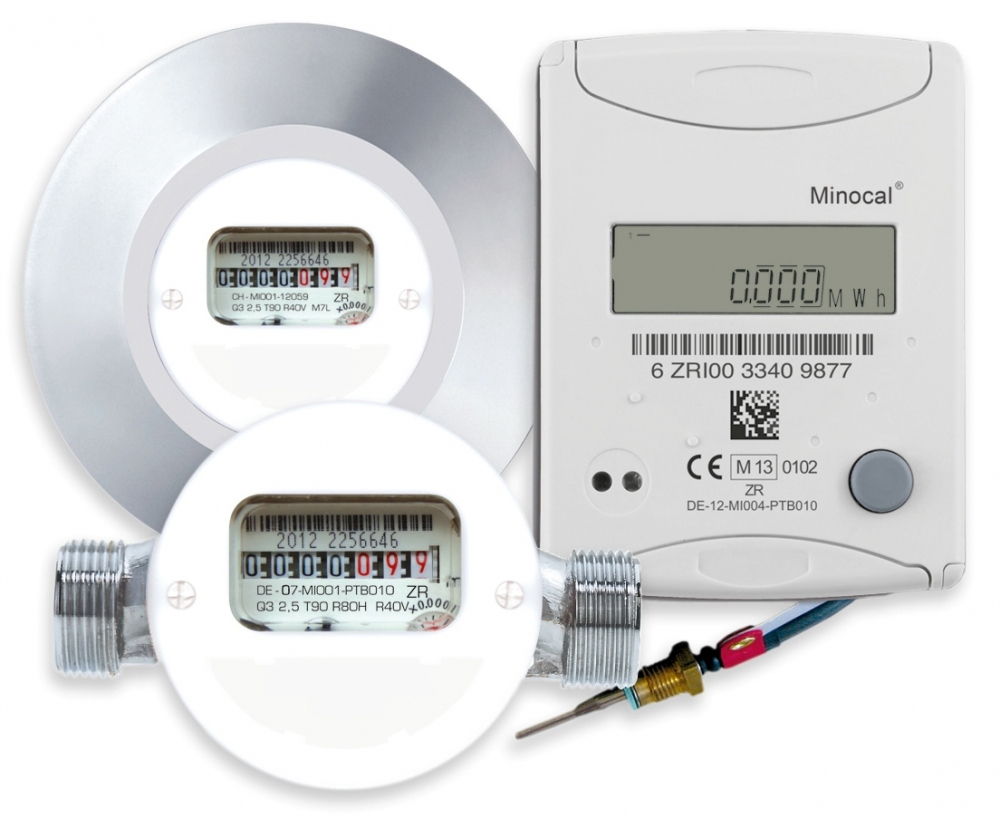 If the wiring in the house is horizontal, the unit is mounted on a horizontal pipe. At the same time, one device per apartment is enough. But with vertical pipe routing, a separate meter will have to be installed for each battery.
If the wiring in the house is horizontal, the unit is mounted on a horizontal pipe. At the same time, one device per apartment is enough. But with vertical pipe routing, a separate meter will have to be installed for each battery.
It should be noted that the heating meter in the apartment is quite accurate. But there are a number of factors that can have a strong influence on the device and cause some error. For example:
What are the types of heating meters?
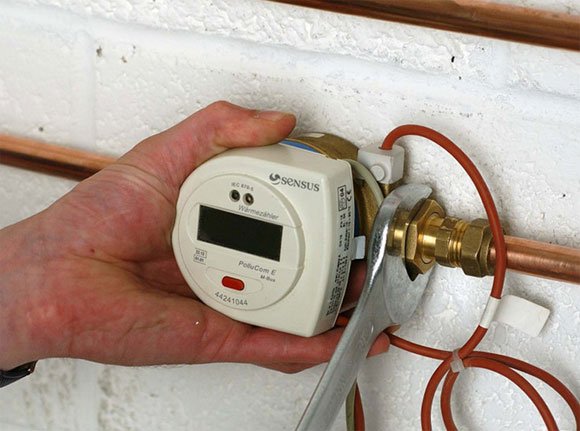 Depending on the installation method, the heating meter can be common and individual. In the case of a common building option, a metering device is purchased one for the entire high-rise building. Despite the fact that the meter is expensive, it will be quite affordable for the owner of each apartment. After all total price will be divided among all tenants. Despite the availability of purchasing a heat metering unit, the savings may not be high due to the fact that some apartments may be poorly insulated. As a result, everyone will have to pay.
Depending on the installation method, the heating meter can be common and individual. In the case of a common building option, a metering device is purchased one for the entire high-rise building. Despite the fact that the meter is expensive, it will be quite affordable for the owner of each apartment. After all total price will be divided among all tenants. Despite the availability of purchasing a heat metering unit, the savings may not be high due to the fact that some apartments may be poorly insulated. As a result, everyone will have to pay.
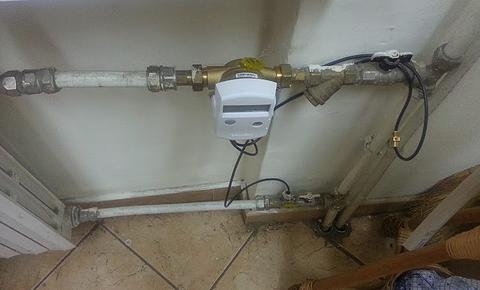 Therefore, many people prefer to install an individual meter in order to pay only for the heat actually received by the apartment. True, such a device is not suitable for every room. For example, installing a meter in an old house with a vertical type of wiring can be quite problematic. After all, the device is installed on the riser. And in such houses there are several of them. Putting a counter on each riser is very expensive. In this case, distributors are used.
Therefore, many people prefer to install an individual meter in order to pay only for the heat actually received by the apartment. True, such a device is not suitable for every room. For example, installing a meter in an old house with a vertical type of wiring can be quite problematic. After all, the device is installed on the riser. And in such houses there are several of them. Putting a counter on each riser is very expensive. In this case, distributors are used.
Also, all heating meters for an apartment according to the principle of operation can be classified into:
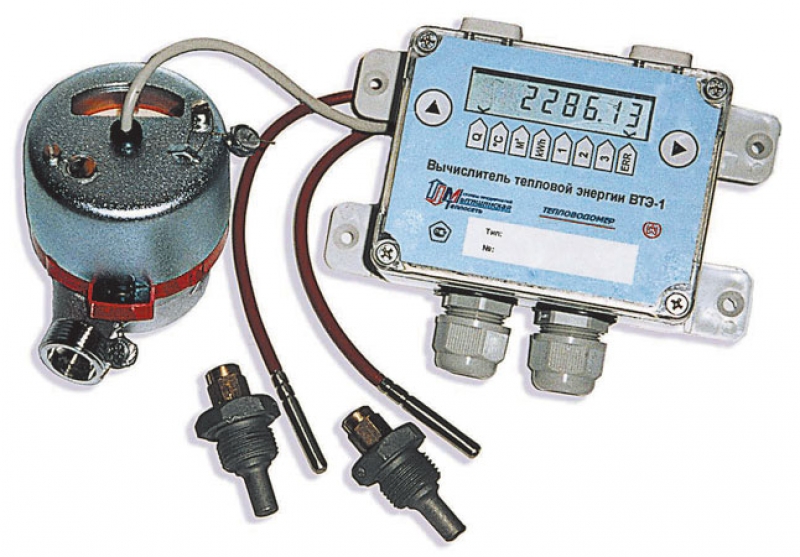
Features of installing a heating meter
It should be noted that self-installation of heating meters in an apartment is unacceptable. This may result in refusal of registration, and the personal account will not be reissued. It is also important to remember that every four years the unit should be given for inspection.
To install the device, you need to carry out a number of actions:

How much will it cost to install a heating meter?
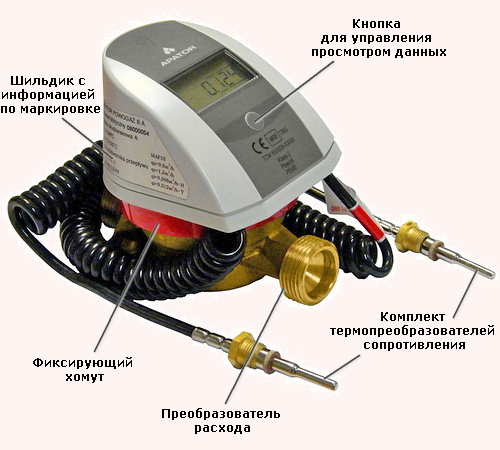 For those who want to spend money wisely, a heat meter is the best investment option. Of course, the price of the device is considerable. But if you consider that the acquisition pays off quickly enough, then the counter is not so expensive. For a heating meter, the general house price is more affordable than for a unit installed individually for one apartment.
For those who want to spend money wisely, a heat meter is the best investment option. Of course, the price of the device is considerable. But if you consider that the acquisition pays off quickly enough, then the counter is not so expensive. For a heating meter, the general house price is more affordable than for a unit installed individually for one apartment.
![]() The cost of devices depends on the type and manufacturer. It must be remembered that in addition to buying the device itself, you will have to spend money on its installation. After all, installation should only be carried out by a professional. I must say that the price of heating meters includes, in addition to the equipment itself, some components: shut-off valves, control valve, filter. On average, the cost is from 9000 rubles. If we add to this the cost of installation, the amount can rise to 20,000 rubles.
The cost of devices depends on the type and manufacturer. It must be remembered that in addition to buying the device itself, you will have to spend money on its installation. After all, installation should only be carried out by a professional. I must say that the price of heating meters includes, in addition to the equipment itself, some components: shut-off valves, control valve, filter. On average, the cost is from 9000 rubles. If we add to this the cost of installation, the amount can rise to 20,000 rubles.
It is very profitable to buy meters in bulk: at the same time, the price for a heating meter will be slightly lower. This is possible, for example, if other residents plan to install this unit in the entrance for their apartments.
Features of calculating the cost of payment for heating
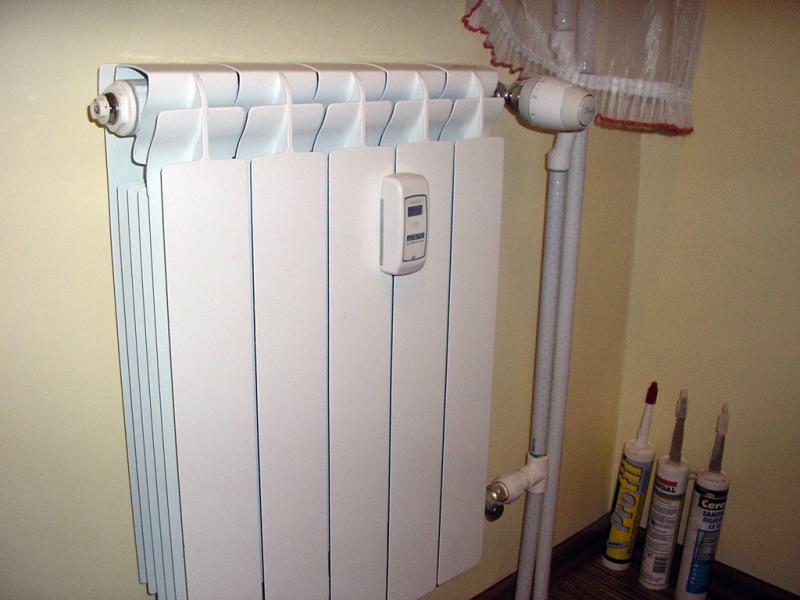 The heating standard is calculated based on the amount of heat energy that was consumed apartment building for one heating period. At the same time, the volume of heat consumed is divided by 12 months and by the total area of residential apartments. So throughout the year, heating services are paid evenly. And how you can adjust the temperature of the heating battery, you can find out.
The heating standard is calculated based on the amount of heat energy that was consumed apartment building for one heating period. At the same time, the volume of heat consumed is divided by 12 months and by the total area of residential apartments. So throughout the year, heating services are paid evenly. And how you can adjust the temperature of the heating battery, you can find out.
By installing the meter on the battery, the payment for heating in the summer will not be charged.
The owner of the apartment will pay according to the received heat. If there is a device that measures heating, its data must be taken monthly and submitted to the appropriate services.
Is it possible to cheat the heating meter?
Despite the fact that payment for heating on an individual meter is much lower than without this device, many are trying to deceive measuring equipment for even more savings.
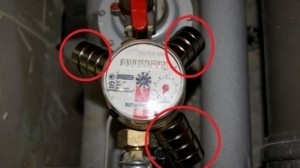 Known today different ways stop the device measuring heating. For example, you can interfere with the internal mechanism of the device. To adjust the readings of the heat meter, a special powerful neodymium magnet is also used. This allows you to underestimate the readings of the device. Some also use such a method as installing thermal converters on the return and supply pipelines.
Known today different ways stop the device measuring heating. For example, you can interfere with the internal mechanism of the device. To adjust the readings of the heat meter, a special powerful neodymium magnet is also used. This allows you to underestimate the readings of the device. Some also use such a method as installing thermal converters on the return and supply pipelines.
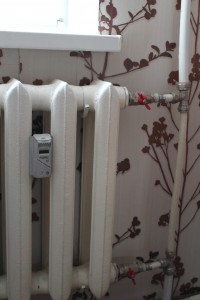 There are other options for how to deceive the heating meter, but it is better not to use such saving methods. Modern models of metering units have a volatile memory in which all readings are recorded. And using a computer to calculate these indicators is very simple. Dramatic changes will be immediately visible. Therefore, it is better not to try to deceive the meter, but to think about how you can insulate the apartment and save heat.
There are other options for how to deceive the heating meter, but it is better not to use such saving methods. Modern models of metering units have a volatile memory in which all readings are recorded. And using a computer to calculate these indicators is very simple. Dramatic changes will be immediately visible. Therefore, it is better not to try to deceive the meter, but to think about how you can insulate the apartment and save heat.
Description:
In the article “One of the problems of energy accounting”, it was said that manufacturers of water and heat meters create a kind of myths to stimulate the sale of their products, forming misconceptions about measurements and accounting in the consumer. But consumers have also succeeded in myth-making. Consider the most common of the "consumer" myths - the myth of the "hacking" of heat meters and the widespread falsification of metering results.
Hacking heat meters: truth and fiction
D. L. Anisimov, chief specialist of Diamer LLC, author of the Teplopunkt website
In the article “One of the problems of energy accounting” 1, it was said that manufacturers of water and heat meters, in order to stimulate the sale of their products, create a kind of myths, forming misconceptions about measurements and accounting in the consumer. But consumers have also succeeded in myth-making. Consider the most common of the "consumer" myths - the myth of the "hacking" of heat meters and the widespread falsification of metering results.
It is common for a person to find his “against” for any “for” - more often for pragmatic reasons, but sometimes just out of sports interest. Therefore, it is not at all surprising that as soon as a metering device appears, ways to “deceive” it are also invented. They begin to openly talk and write about these methods, but if specialists do this in order to draw the attention of other specialists to the problem and find a way to protect themselves, then non-specialists often interpret such conversations and articles incorrectly. This, in particular, happened with the articles by A. G. Lupei “On prohibited methods of “metrological maintenance” of commercial heat energy metering stations” and V. P. Kargapoltsev “On falsifications in instrumental heat and water metering” 2 . Readers "hooked" only the information that lay on the surface: theoretically, any microprocessor device (which is the heat meter) can be reprogrammed during operation, and in practice there have been cases when this property of some types of devices was used by unscrupulous exploiters to falsify metering results. And after some time, there was talk and even articles appeared that any heat meter can be “hacked” and everyone always does it. That's right: it is not given to us to predict how our word will respond! I remember the statement of one of the participants in the online forum of the Teplopunkt website: “... the software, in particular, of the SPT calculators, is broken by a familiar programmer using the buttons on the panel ... in about seven minutes.” And quite recently, a participant in the forum of the Rosteplo website, who calls himself the “scientific editor” of a certain technical journal, quite seriously stated that “if you wish, you can enter the desired code through any button of the calculator with a vibrocode (Morse code): costs per thousand, theft per million". But how is it in reality, namely: is it possible to “hack” a heat meter and is it worth doing it in practice?
Let's start with the fact that it is very easy and convenient to speculate on the "hacking" of heat meters (or heat meters). Firstly, no one really understands and cannot explain what exactly is meant by this very “hacking”. Secondly, everyone knows that a heat calculator is like a small computer, and people talk about "hacking" computers all the time. Thirdly, the majority of users of heat meters have a very approximate idea of their "stuffing" (as well as about the design of computers). Fertile ground for spreading rumors about "heat metering hackers". But are analogies with the world of computers valid in this case? With "computer hacks" everything is clear: they are usually associated with penetration into the system from the outside (through some interface) by selecting (calculating) the desired code combination (password) followed by reading or changing any data stored in this system . At the same time, you need to understand that a hacker can “hack a computer” because:
– he is familiar with the operating system;
– he is familiar with the interface;
- access to data and the possibility of changing them by means of operating system through a certain interface exists in principle, i.e. it is provided by the developer.
But what about the heat meter?
First, not only do we not have standard and learned [hacker] operating systems, we don't have operating systems at all. We can talk about a working program, but each type of heat meter has its own program, and it is unlikely that anyone other than the developer-manufacturer has its source texts and is able to find some “loopholes” in it for subsequent “hacking”.
Secondly, we do not have standard interfaces - this is not about connectors and electrical signals, but about protocols. However, if the "hacker" does not know the operating system, the presence of these interfaces is unlikely to help him.
Thirdly... and what, in fact, will a hacker do, "penetrating inside" the computer?
Using the buttons on the panel of calculators of many types (SPT, VKT, KARAT, etc.), you can change the settings, that is, all kinds of coefficients and features that determine the logic of the device. But this is a public and documented feature. So what then "breaks" the "familiar programmer" of the above quoted statement? And seven more minutes? Maybe he picks up a forgotten password to change the setting data in order to “save” later by changing some coefficient? But often, as, for example, in the case of SPT, access to the configuration data is protected not by a password, but mechanically by a switch located under a sealed cover. But even if you change the coefficient, then it will also be displayed on the calculator's display in a modified form, i.e., fixing the fact of juggling will be as easy as shelling pears. So what's the point of this "hack" anyway?
Obviously, it makes sense only when the hacker either knows how to change the coefficient in the instrument's memory, leaving it unchanged during the indication, or he does not change the coefficients at all, but the data in the archives. Theoretically, both are possible - but only under the obligatory condition that the manufacturer of the device specifically foresaw this possibility, and our hacker found out about the way to implement this possibility. At the same time, using buttons (calculators have few of them, some samples have only one or two), or even using Morse code, huge arrays of interconnected archive data, is definitely not for the faint of heart. The manufacturer would rather provide the possibility of reprogramming (this term can also be understood as changing work program, and changing the contents of archives) using an external device (computer, remote control) through the data transfer interface without breaking the seals and leaving traces. The "benefit" of having such an opportunity may lie in the fact that "in which case" "cover up the traces" of their own shortcomings, leading to incorrect operation or failure of the device. This opportunity may also be useful to service organizations in the same cases - by falsifying accounting data, they can “whitewash” the manufacturer whose products are being introduced, and save their own face; they can thus mask their flaws in the installation of devices. But the relevant knowledge and the necessary special equipment (software and/or hardware) can only be provided by the manufacturer of the heat meter. Talking about some "foreign" hackers who "hack" any device "using buttons" is untenable. Moreover, not a single "eyewitness" could explain to the author what exactly was "hacked" in the heat meter, in other words - what is the essence of this action?
But back to the distortion of accounting data with the help of special means. Diplomatically speaking, we admit that this is possible. But can it be used widely and permanently? A modern heat meter is a means of accounting for heat and coolant, analyzing and recording in its archives the values of many interrelated parameters over long time intervals. It is very difficult to “correctly” manipulate all these data - falsification is found, which, in fact, was shown in the above-mentioned article by A. G. Lupey. The task of the counterfeiter is further complicated by the fact that, according to the requirements of the Accounting Rules, the contents of the heat meter archives are read and stored on electronic or paper media with a frequency less than the depth of the archives. In other words, daily or weekly data is written to the log. Obviously, with the help of the log, it becomes quite simple to track the “forced” change in the data stored in the computer at some point. Manufacturers of heat meters understand this better than consumers, so it is not in their interests to actually use "falsified" functions and it is completely stupid to open them to someone, to teach someone how to use them. After all, it is clear that any reliably revealed fact of a change in the data in the meter clearly indicates that the manufacturer is involved in the case.
In conclusion, we will give an illustration of the real security of heat meters from "hacks" and falsifications. Several years ago, at a conference in Yekaterinburg, V. S. Kazachkov from Omsk reported on the system of apartment heat metering developed by him. One of the listeners asked the question: what happens if you cover the air temperature sensor in the apartment with a heating pad so that its readings practically do not differ from the readings of the heating radiator temperature sensor? After all, the smaller the temperature difference between the radiator and the air, the lower the heat consumption: Q = f(D t). The speaker answered simply brilliantly: the accounting system analyzes all the parameters, and if it “sees” that the air temperature in the apartment has risen so much, it will give a signal to the fire alarm panel and “they will come to you”! The moral of the story is this: you can fool a single sensor, but it is almost impossible to fool the whole system. A heat meter is precisely a system that measures and records a number of interrelated parameters. Knowledge of these relationships allows one to analyze the archives of the device and identify not only falsifications, but also “unintentional” deviations in the operation of the device, for example, caused by the imperfection of its design or poor manufacturing quality.
Thus, the stories that “any calculator can be hacked using its own buttons” are a fiction, a myth invented by consumers. Therefore, one should not argue that "all accounting is falsified." Of course, the information that some types of heat meters can be “reprogrammed” using special tools directly at the metering unit is not without foundation, but you need to know that such falsifications are revealed quite simply - for this you only need to know the physics of the processes occurring in the heat supply system and do not be lazy to analyze the archives of "suspicious" heat meters.
2 The text of the articles can be found at www.teplopunkt.ru.





